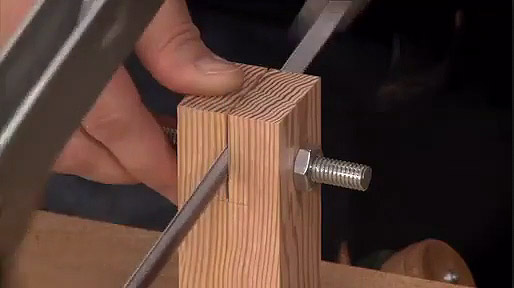I rely on my table saw for everything from crosscutting and ripping boards to cutting joinery like dadoes and rabbets. No matter what the operation is, a clean, splinter-free cut is a must. The trouble is even if your saw is tuned up, you can still end up with a ragged edge. Thankfully, the solution is simple and inexpensive — a shop-made, zero-clearance insert.
The reason you get better cuts with a zero-clearance insert is that the opening in the insert exactly matches the thickness of the blade. This fully supports the workpiece as it’s cut so fibers can’t tear away.

The first step in making the insert is to cut the blank to width. I use 1/2" MDF because it’s inexpensive, flat, and easy to work with. I aim for an easy slip fit in the opening with no side-to-side play . By the way, I usually make several inserts at a time. Then I always have one on hand.

With the blank cut to the final width and rough length, I attach the stock insert with double-sided tape. The stock insert will act as a template for the next few steps. Cutting the rounded ends is a two-step process. The first step takes place over at the band saw. Follow the curve of the stock insert and cut away most of the waste.

The second step is to trim the blank flush with the template. It’s a quick job at the router table. But you want to skip around the retaining pin and the notch for the blade guard. I sand these bumps away later.

At this point, you can add a few details. A finger hole makes the insert easy to remove. Then I cut a notch to accommodate the blade guard.
Another detail to add is a retaining pin to keep the insert from lifting out during use. The insert should also be flush with the saw table. If it isn’t, install set screws to raise it or rabbet the edge of the insert to lower the insert's height. The last detail to add is a wide kerf in the bottom face. This provides clearance for some saw blades that won’t retract enough for an uncut insert to rest in the opening. Then, to create the blade kerf, clamp a board across the insert to hold it in place. Finally, turn on the saw and slowly raise the blade.











